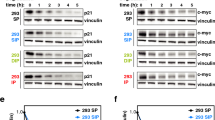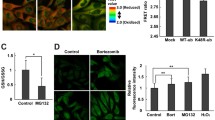Abstract.
The generation of reactive oxygen species is an inevitable aspect of aerobic life. In addition to being exposed to free radicals in the environment, aerobic organisms must also deal with oxygen radicals generated as byproducts of a number of physiological mechanisms - for example, by the mitochondrial and endoplasmic reticulum electron transport chains, and by cells of the immune system. Although most organisms are equipped with several lines of defense against oxidative stress, these defensive mechanisms are not 100% effective, and oxidatively modified forms of proteins accumulate during aging, and in many pathological conditions.¶Oxidatively modified proteins can form large aggregates due to covalent cross-linking or increased surface hydrophobicity. Unless repaired or removed from cells, these oxidized proteins are often toxic and can threaten cell viability. Mammalian cells exhibit only limited direct repair mechanisms, and oxidatively damaged proteins appear to undergo selective proteolysis, primarily by the major cytosolic proteinase, the proteasome. Interestingly, it appears that the 20S 'core' proteasome conducts the recognition and elimination of oxidized proteins in an ATP-independent and ubiquitin-independent pathway.
Similar content being viewed by others
Author information
Authors and Affiliations
Additional information
Received 31 May 2001; accepted 26 June 2001
Rights and permissions
About this article
Cite this article
Shringarpure, R., Grune, T. & Davies, K. Protein oxidation and 20S proteasome-dependent proteolysis in mammalian cells. CMLS, Cell. Mol. Life Sci. 58, 1442–1450 (2001). https://doi.org/10.1007/PL00000787
Issue Date:
DOI: https://doi.org/10.1007/PL00000787




